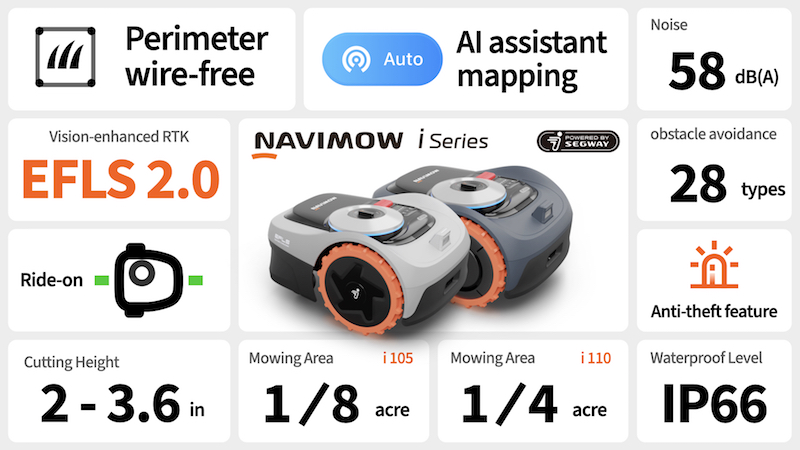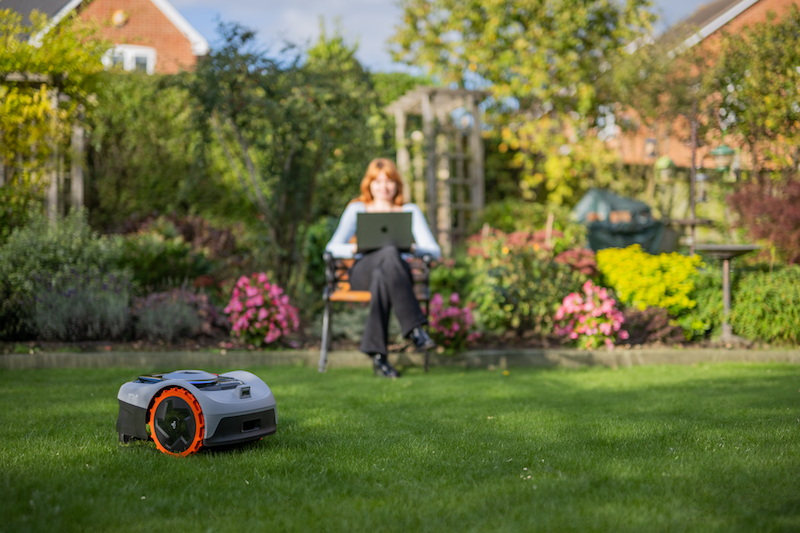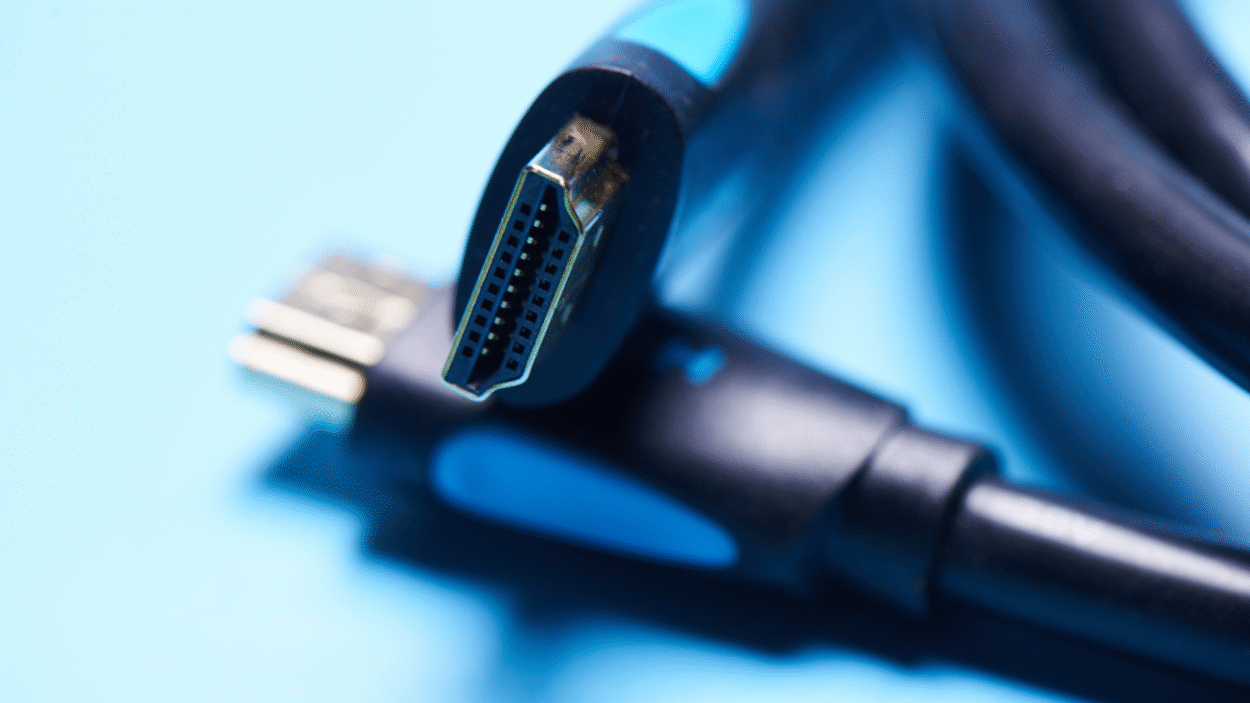Earlier in the spring, I wrote on article on the Segway Navimow robotic lawn mower. While I could test many aspects of the Segway i110N mower that the company sent me, it was too early in the spring for me to assess its mowing performance. First, I want to review a few things for people that didn’t read my first article (it can be found here).
Segway isn’t a company that the average person associates with robotic lawn mowers. The brand was founded in 1999 followed by the introduction of their self-balancing, two-wheeled, personal transporters in 2002. The company has come a long way since then and now manufactures a wide range of electric scooters, electric go-karts, eMopeds, off-road ATVs, transportation and service robots, portable power stations, and, since 2021, robotic mowers.
New for 2024 is Segway’s i Series of Navimow robotic mowers. This latest generation of robotic mowers from Segway features:
- App Control
- Safety first design with bump, lift, and tilt sensors.
- Can climb slopes up to 30% (16 degrees)
- Completely waterproof (IP66 rated) and easy to clean
- Extremely quiet – Only 58 dB(A) – Less than the noise level of an average conversation
- The ability to divide a lawn into multiple zones. Zones can then be individually scheduled for cutting.
- Automatically suspend mowing in adverse weather based on local Internet weather forecasts
- Real-time status updates on the progress of mowing in the app including the current position of the mower
- Over-the-air software updates
- An optional 4G cellular radio (includes one year of connectivity) provides enhanced communications when Wi-Fi connectivity is poor. It also provides anti-theft notifications when the mower is moved outside its virtual boundary.
However, what really separates the Navimow i series mower from the competition is its ability to navigate precisely around a yard, cutting the grass without the need for a perimeter wire to keep it from leaving the yard, wandering into flower beds, or getting into other kinds of trouble. Instead, to precisely navigate, the mower uses a unique high-precision location technology called EFLS (Exact Fusion Locating System). EFLS combines satellite positioning data acquired by the receiver in the mower and the global navigation satellite system (GNSS) antenna that is placed in the yard. It also uses data collected by sensors in the mower including a gyroscope, accelerometer, magnetic compass, and odometer. The position of bushes, trees, and other landmarks is captured by the mower’s 140-degree wide field of view camera during a mapping process.
ELFS also assists the mower in avoiding obstacles during mowing. And, the mower uses data collected by its camera to assure that the mower doesn’t navigate into any non-grass areas such as paved pathways, patios, the driveway, or the street.

In my first-look article on the Segway Navimow i Series robotic mower, I went into great detail on the installation, setup, mapping, and navigation capabilities of the mower. In this article I’m going to focus on the mowing capabilities of the mower along with some of the optional features not covered in the first article.
Mowing Performance
Robotic mowers don’t mow the grass the way a standard, electric or gas-powered mower does. It doesn’t have a large blade and a powerful motor that can chop through tall grass. Instead, robotic mowers have very small, razor-sharp blades, that are designed to cut just a fraction of an inch off the top of blades of grass. So, instead of cutting your lawn once a week, as you would with a standard mower, you cut your grass every day with a robotic mower. By only cutting a tiny bit off of each blade of grass, it minimizes the power required to cut the lawn, maximizes the time the mower can spend cutting the grass, and minimizes the number of times the mower has to return to the base station to recharge.
When scheduled this way, the Navimow did an excellent job cutting my lawn.
That being said, no robotic mower I’ve worked with, including the Navimow, is truly a device where you can set it up and forget about it. When the mower finds, for example, a hole in your lawn that traps a drive wheel, that it has somehow missed before, it will get stuck and require someone to move it out of the hole and get it started again.
The Navimow mows like a human would their lawn. It cuts the boundary of the lawn and then cuts nice rows to cover the central area of the lawn. Then, each time it cuts the lawn, it adjusts the angle of the rows, so the mower doesn’t wear tracks in the lawn by cutting the same path over and over.
This is the way a robotic mower should cut a lawn. However, because it changes the path it takes each time it cuts the lawn, it can encounter an obstacle that can trap the mower even though it has mowed for many days without an incident. For this reason, if you are going on vacation, you need to show your neighbor how to get the Navimow started again if it gets stuck.
This isn’t an issue that is unique to the Navimow; it is a problem that is common to all the different robotic lawn mowers that I have used. However, it is important to understand before you buy any robotic mower, leave for vacation, and come back to find your grass is a foot tall.
The Navimow’s EFLS location technology, which is the foundation of its navigation, uses both GPS data and images of landmarks around the property to precisely define the location of the mower. However, the pictures of trees and bushes taken early in the spring would be vastly different in mid-summer when these plants are full of leaves. And, in the fall, when the leaves have turned color and started to fall, these images would again be vastly different. I had a concern that this would affect the accuracy of the mower’s navigation. Fortunately, Navimow thought of this and the mower periodically updates the images it has captured.
Finally, it is important to know that if the home loses its internet connection this will not impact the navigation of the mower during mowing. As long as the mower is still receiving GPS signals it will be able to navigate and mow the yard. A lost internet connection will, however, disable the ability for the mower to be controlled through the Navimow app.
Obstacle Avoidance
The Navimow does a very good job of avoiding obstacles (trees and bushes) and keeping itself within the confines of your lawn. However, for one test, I placed a foot-long piece of 2×4 lumber in its path. At first the Navimow tried to climb over the 2×4. When it found it couldn’t make it over, it backed up and went neatly around the piece of wood. I believe it would have been better if the mower had simply avoided the entire incident in the first place by going around the 2×4 instead of first trying to climb over it. Had the Navimow made it over the 2×4, I believe it was tall enough to have “high centered” the mower, kept the drive wheels from contacting the grass, and trapped the mower. Essentially, while the mower does very well avoiding flower beds and trees in your yard, it may have an issue with unexpected obstacles in the yard.
Theft Prevention
Robotic mowers are expensive and there is the potential for one to be stolen. The Navimow Access+ is an optional add-on to the Navimow. It provides a 4G cellular network connection for the mower and offers a number of useful features. First, it provides remote access to the mower using the Segway app. With the Navimow Access+ module installed you can control the mower from anywhere.
Second, the Navimow Access+ allows the mower to connect to the internet when it is out of range of the home’s Wi-Fi network.
Finally, with the Navimow Access+ installed, the mower can be protected against theft. With the anti-theft feature enabled, the mower will sound an alarm and send the homeowner notifications if the mower is moved outside of a geofence surrounding the yard. The alarm will continue to sound until a user-defined PIN code can be entered to silence the mower and restore its operation. If the mower is stolen, there is a “find my mower” function that reports the location of the mower so it can be reported to the police.
The Navimow Access+ module comes with one year of cellular service. After one year the service costs approximately $33 per year.
Summary & Conclusions
As I concluded in the first article, the Navimow i Series mower is an incredible value. The sophisticated mapping and navigation set it apart from other entry-level mowers at its price point, and even many more expensive mowers. While, like other robotic mowers, you can’t simply set it up and forget about it, it will save a homeowner a tremendous amount of time compared to having to mow their lawn themselves each week. It is also a real bargain compared to paying for someone else to mow your lawn.








